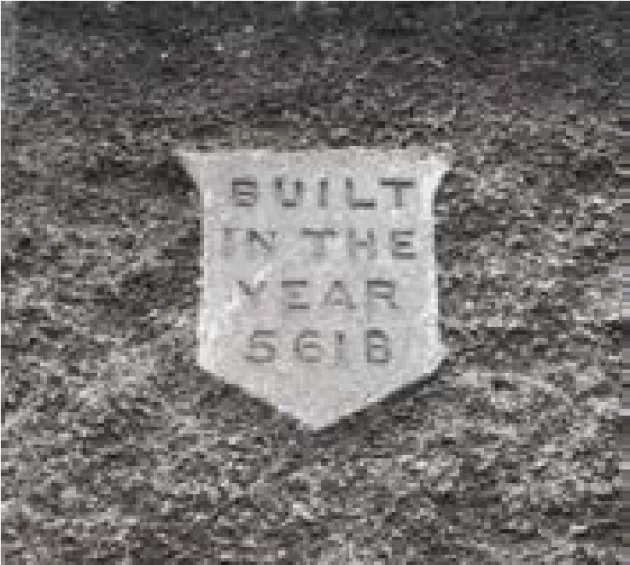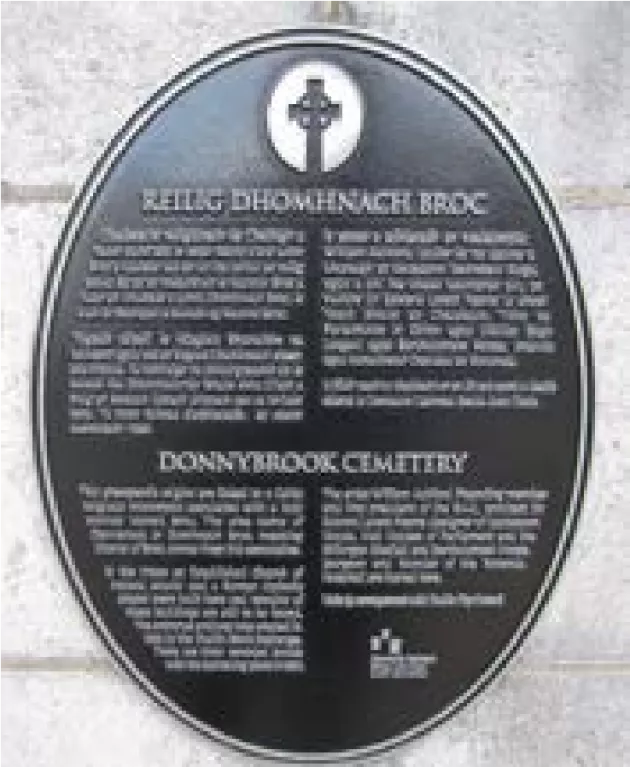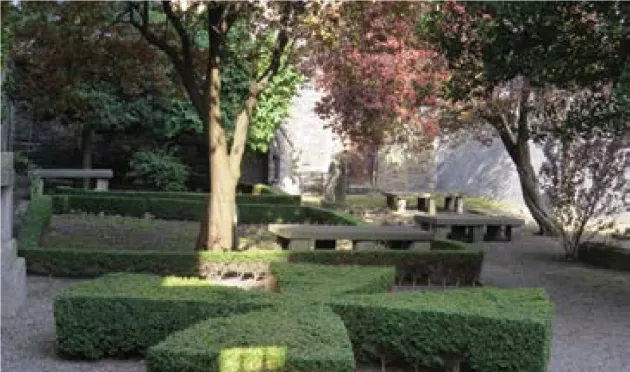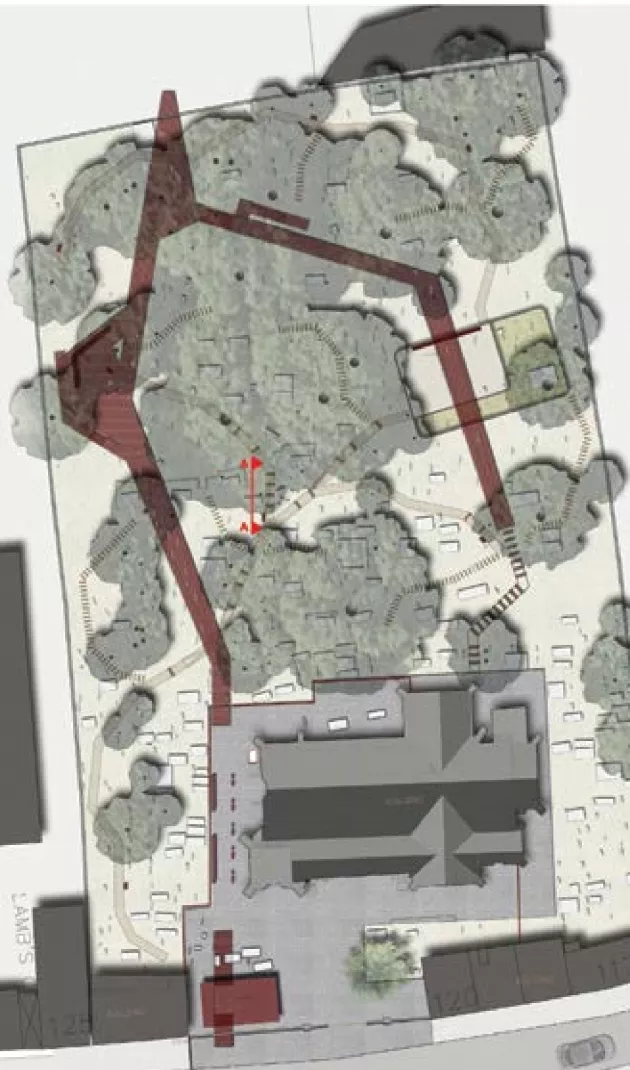4.9.1 Historical Graveyards
4.9.1 Historical Graveyards
Historic graveyards are a valuable asset to the city and are key in promoting genealogical tourism and heritage conservation. There are a number of historic graveyards around the city which are no longer in use and are less accessible to the public. Such cemeteries, steeped in history, have the potential to provide a unique heritage experience for those wishing to learn about their importance and link to the historical periods that shaped Dublin’s heritage.
It is not an intention to make these spaces fully accessible to the public, rather to promote awareness of the importance of their heritage and culture.
Fairview Jewish Cemetery
This is Dublin’s oldest Jewish cemetery dating back to 1718. It is part of the story of the small but vibrant Jewish community in Dublin and Ireland. The earliest records indicate a visit in 1079 by Jewish men to the King of Munster and by the 1230s it is considered that there probably was a Jewish community in Ireland located mainly in Dublin. Records of 1745 indicated a Jewish community of about forty families consisting of some 200 persons. This community grew with many arriving in Ireland to escape persecution from other countries. The community reached its greatest numbers by the early 1900s with nearly 4800 estimated to reside in the city.

The Jewish community in Fairview is thought to have settled there in the early 1700s and were Marrano Jews who escaped persecution from the Inquisition in Spain & Portugal. Originally this plot of land was rented for 4 years from a Captain Chicester Philips of Drumcondra Castle, however, the London Jewish Congregation bought the land and rented it back to the community for the annual price of 1 peppercorn. In 1857 a wall was erected around the grounds to prevent headstone and grave robbing, which was a regular occurrence at this time. A gate lodge was also built and inscribed with the numbers 5618 which in the Jewish Calendar is 1857. Burials took place until the early 1900s, with only 4 taking place between 1900 and 1956. Today there are some 148 headstones still in place inscribed in both Hebrew and English. As with other historic cemeteries, access to the public is by appointment only.

Donnybrook Cemetery
This cemetery was once the location of a Celtic church founded by Saint Broc in the 7th century. In the 1700s, Church of Ireland and Roman Catholic churches were built on the grounds and the remains are still present. The period of use of this cemetery dates from 800 to the late 1800s, after which the congregation outgrew the premises and moved to a new location at Simmonscourt Road. A number of restoration works have been carried out over the last decade, which resulted in a comprehensive list of burials and a number of historical accounts of the walled cemetery. Some 7000 burials have been recorded in the cemetery, with the last taking place in 1936. There are notable burials at this location, such as Edward Lovett Pearce, a famous architect of the early 1700s responsible for introducing Palladian architecture to Dublin. His works include the House of Commons (now Bank of Ireland) on College Green, and Castletown House in County Kildare. Bartholomew Mosse, surgeon and founder of the Rotunda Hospital is also interred there. The cemetery fronts onto Donnybrook Road with an impressive cut -stone entrance arch, erected in 1893 by members of the Dublin Stock Exchange in memory of their registrar. An interpretation plaque was recently erected by Parks Services with the assistance of the Ballsbridge, Donnybrook and Sandymount Historical Society.

Huguenot Cemetery
The Huguenot Cemetery, located on Merrion Row, references a particular point in European history and the establishment of a significant community in Dublin. The Huguenots were French protestants and mainly Calvanists who were escaping religious persecution in France after the revocation of the Edict of Nantes in 1685. They established a thriving community in Dublin and became an integral part of its commercial and civic life, particularly in textiles, watch making and finance. The cemetery dates from 1693, a time when the majority of Huguenots arrived in Ireland under the encouragement of the 1st Duke of Ormonde, James Butler, who became Viceroy of Ireland in 1662 following exile in France. An inscribed plaque on the gate walls lists the 239 surnames of people buried there. One of the most notable families listed is that of the Becquett family, who are ancestors of one of Dublin’s most important literary figures, Samuel Beckett. Other notable Huguenot names prominent in Dublin life include D’Olier and Le Fanu. D’Olier Street was named after Jeremiah D’Olier, a Huguenot goldsmith, City Sheriff and member of the Wide Street Commission. Le Fanu park in Ballyfermot is named after Sheridan Le Fanu, the Victorian-era writer and Huguenot descendent.

St James’s Graveyard
The former Church of St James and its cemetery are located in the Liberties on St James’s Street where its origins date to 1190.The original church was rebuilt twice, with the foundation stone of the current church being laid by Daniel O’Connell in 1844. Design of the church is attributed to Cork-born architect Joseph Welland. By the early 1960s, both the cemetery and church were closed and the church building was sold to private ownership.
More than 30,000 burials are registered for the cemetery and include both Catholics and Protestants. Notable are the burials of the Channel Row Nuns who persevered in their religious lives in a convent near Brunswick Street during the 1700s in a time when the Penal Laws oppressed Catholics.
In 2010, the Parks Services, which maintain the cemetery, developed a landscape masterplan for the church & cemetery grounds with the objective of sensitively linking it to the surrounds. This proposed the use of an elevated walkway over the cemetery, taking advantage of the original slope of the lands down to the Liffey while minimising ground level impacts where there are burial plots. The scheme or a modified version will, when complete, add to the cultural and tourism resource of the area.
Policy
- To manage and maintain historical graveyards to enhance their historical and cultural significance to Dublin, while maintaining the dignity of these burial places.
Actions
- To develop appropriate forms of interpretation to promote knowledge of historical graveyards and assist research of cemeteries.
- To consider the provision of columbarium walls in burial grounds.